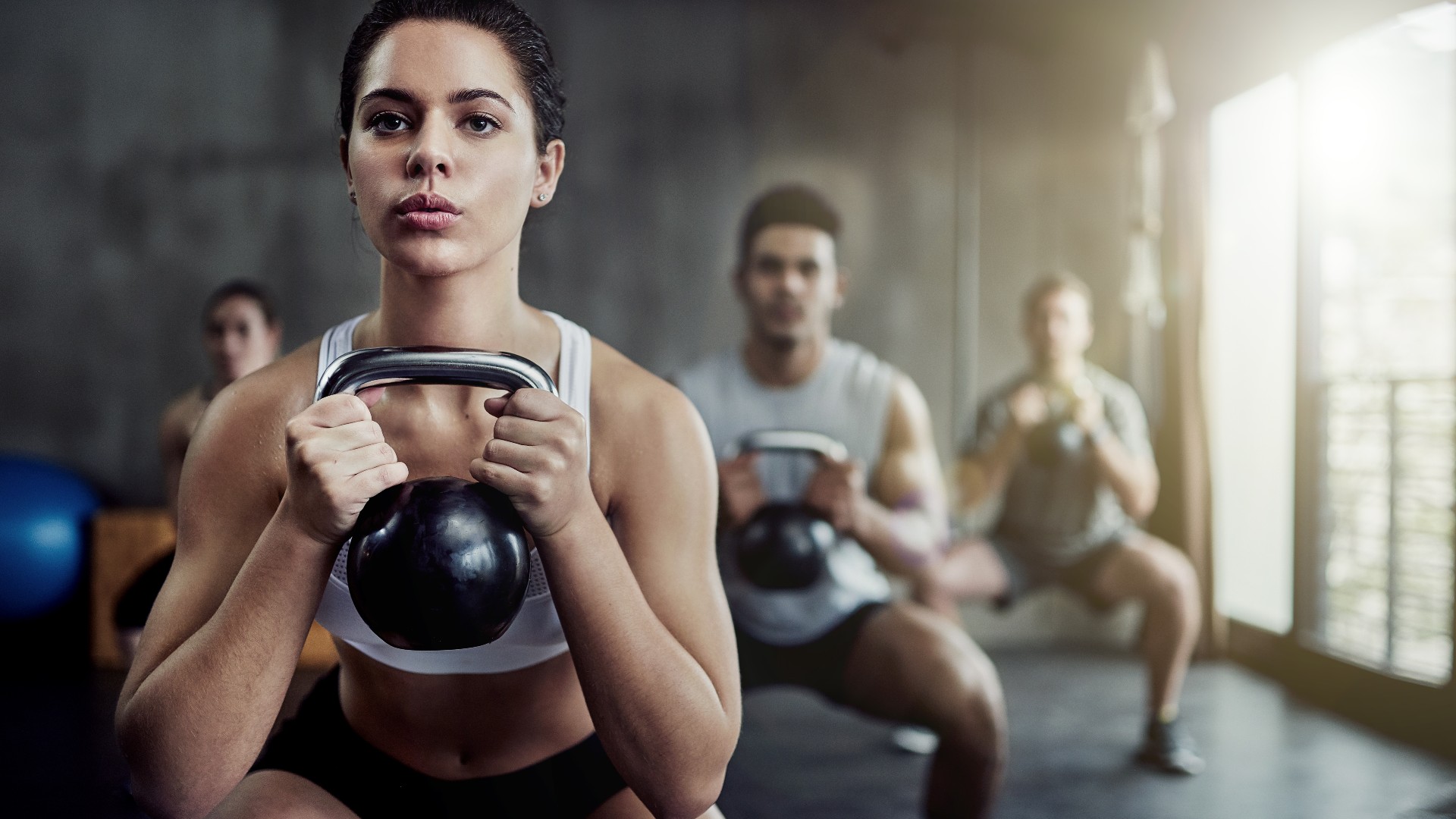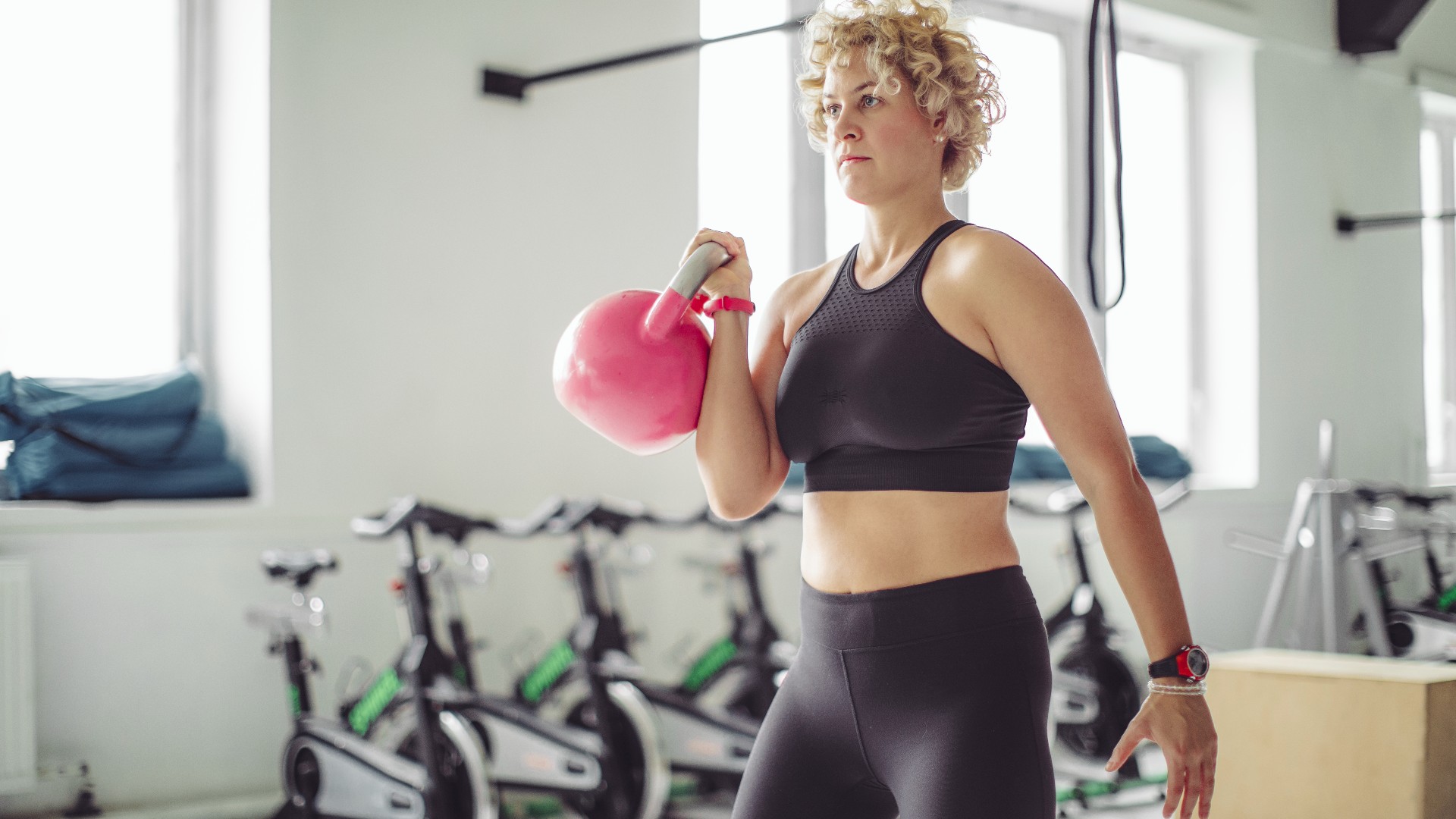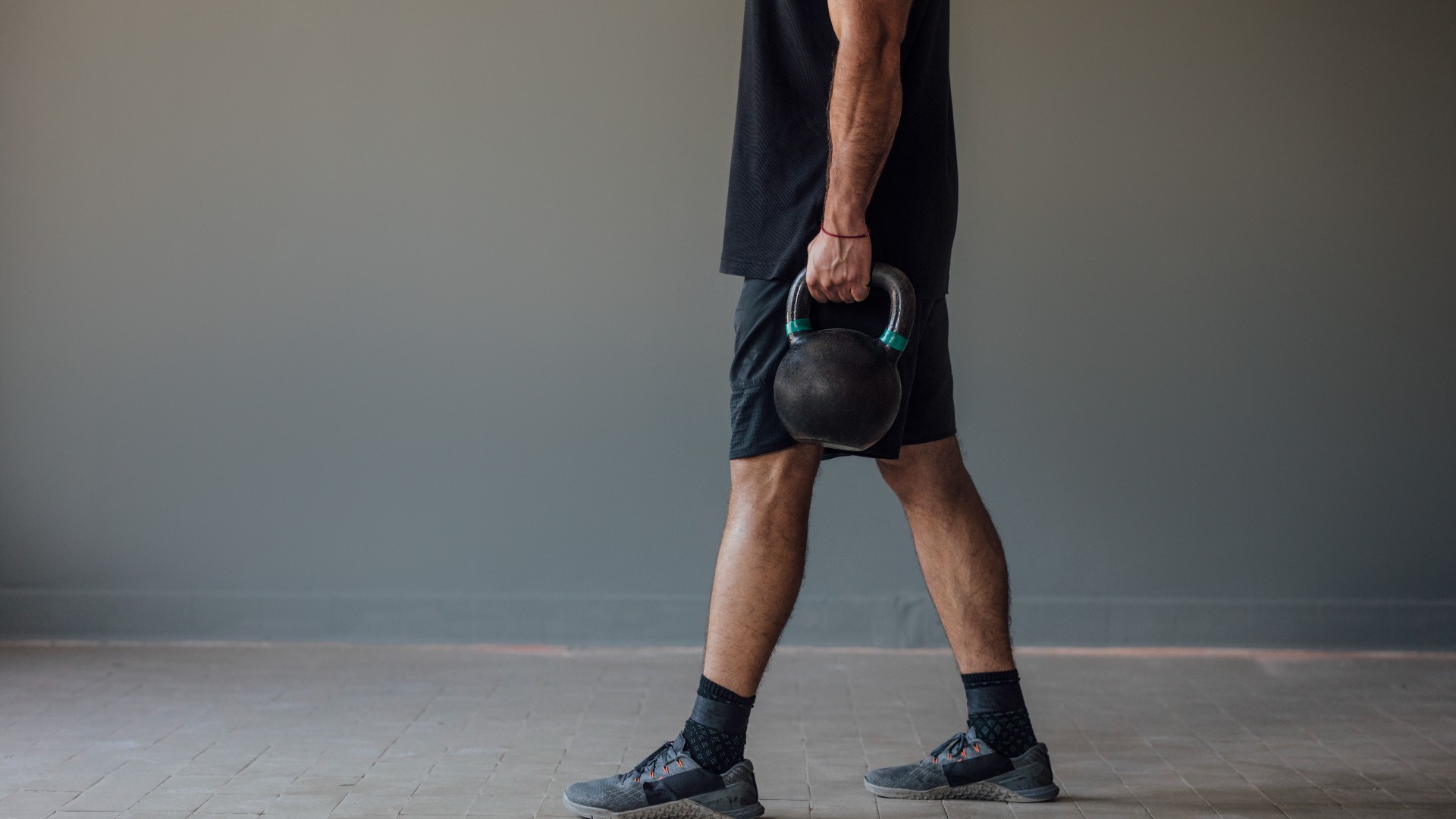
These are the five best kettlebell exercises and the only introduction you'll need to kettlebells. If you're a beginner looking to expand your fitness repertoire, using unfamiliar equipment in the gym could feel intimidating, so why not lock down these stable kettlebell exercises now?
As a fitness instructor, I encourage clients to train with kettlebells for various reasons. Firstly, they're versatile, and can be used for most exercises and workouts to target and strengthen your major muscle groups like your chest, core, legs, back and shoulder muscles. Kettlebells also help you develop better functional movement patterns and technique, but it takes some skill to use them properly.
That’s why learning how to use a kettlebell properly and getting to grips with the basics early on could help you maximize your results when lifting them. That's why we also cover how to hold a kettlebell properly to keep you safe.
If you plan to kettlebell swing your way to better fitness, these five exercises will target most of your muscles, build strength, muscle mass, and power, and improve your cardio fitness when used regularly. If you already consider yourself a seasoned swinger, find out what happened when our fitness writer did 100 kettlebell snatches a day for a week, or read on for the best kettlebell exercises for beginners and why you should try them.
Benefits of kettlebells
Kettlebells are a strength and conditioning exercise fit for any workout routine and exercises like rows, presses, and cleans. Whether your goal is to build strength across your entire body or boost your cardio fitness, the benefits of kettlebells are endless.
And you only need one weight to reap the benefits of kettlebells. Working one side of your body at a time (known as unilateral training) could improve core activation, coordination, and balance, and strengthen your weaker muscles while helping to build power and muscle.
According to research by the Journal of Strength and Conditioning, consistent biweekly kettlebell workouts could improve maximal and explosive strength. For example, coaches could use kettlebell training to improve power in athletes who sprint or powerlifters perfecting their one-rep max squat. Moreover, research by the Journal of Human Kinetics found that kettlebells work well in functional resistance training to build neuromuscular power by recruiting multiple muscle groups.
Get instant access to breaking news, the hottest reviews, great deals and helpful tips.
Best kettlebell exercises for beginners
If you’re new to working out with kettlebells, I believe these are the five best kettlebell exercises for beginners, tried and tested by us. I also recommend the best cross-training shoes to support your workouts.
1. Kettlebell swings

It’s no surprise that kettlebell swings take the top spot for the best kettlebell exercise for beginners, but there’s plenty you can do to increase difficulty. For example, American swings require you to swing the weight up to shoulder height to increase shoulder activation and test your control. Alternating swings adopt the unilateral training approach we mentioned earlier.
My tip: Focus on the hip hinge. Avoid squatting or sending focus into your arms. Remember to squeeze your glutes as the kettlebell reaches shoulder height. I recommend learning how to do kettlebell swings here.
How:
- Stand with feet shoulder-width apart (or slightly wider), toes pointed 45 degrees outwards
- Grip your kettlebell with both hands
- Maintain a soft knee bend and set your shoulders back and down. Brace your core
- Hinge forward at your hips and send your bum back while maintaining a flat back. Swing the kettlebell back between your legs
- Explosively drive it forwards while extending your hips until the weight reaches shoulder height, then control the descent back down.
2. Kettlebell clean and press

It might sound complicated, but once you nail your form, the clean and press can translate into any workout style, from full-body strength training to cardio.
My tip: Keep your biceps close to your ear as you press upward.
How:
- Stand with your feet shoulder-width apart and place the kettlebell between your feet
- Grip the handle overhand, just off center.
- Keep your back flat and chest forward-facing and brace your core, then swing the kettlebell back slightly and pull it upwards close to your body
- Bring your arm under the kettlebell into a racked position, with your elbow close to your ribs and the weight resting on your forearm
- Drive the kettlebell above your head in an overhead press and extend your elbow. Switch sides.
3. Farmer’s walk

Recently, I did the farmer’s walk every day for a week, and I believe it’s one of the best kettlebell exercises for building strength all over. Here’s how to nail it.
My tip: Avoid leaning backward or favoring one side and keep your core braced.
How:
- Stand feet hip-width apart with two kettlebells placed on either side of your feet
- Bend your knees and lower into a squat position with your chest proud and weight evenly distributed across your feet
- Grip both kettlebells, brace your core, and set your shoulders back and down
- Keep your chest proud, look forward, and push the ground away to stand
- Begin walking with small and controlled steps.
4. Kettlebell bent over row

Kettlebell rows work the muscles in your back, including your lats (the large muscles down the side of your back), middle and lower traps, rear delts (backs of your shoulders), and deeper back muscles, but also your core muscles, biceps, hamstrings, and glutes. You could row one weight or two, depending on your ability.
Tip: Graduate to two weights when comfortable. Learn how to do a dumbbell row here.
How:
- Stand with feet shoulder-width apart, toes pointed slightly outwards
- Place one kettlebell between your legs
- Maintain a soft knee bend and set your shoulders back and down. Brace your core
- Hinge forward at your hips and send your bum back while maintaining a flat back, into a bent-over position.
- Grip your kettlebell in both hands, then pull the weight towards your belly button, rowing toward your hips rather than your chest
- Control the descent back down.
5. Kettlebell deadlift

The deadlift is a staple functional exercise and hits most major muscle groups in one fell swoop (or lift, I should say), and learning proper kettlebell skills also translates to dumbbells. You can expect to work the muscles in your posterior chain — namely your back, glutes, hamstrings, and core muscles.
Tip: Learn how to deadlift in detail to set up for success.
How:
- Stand with your feet shoulder-width apart, toes forward, and place the kettlebells on either side of your feet.
- Bend your knees and squat down to grip both kettlebells
- Roll your shoulder blades back and down, engage your core, and squeeze your shoulder blades to engage your lats.
- Sit your bum down, chest forward facing, with a flat back. Look ahead and inhale.
- Exhale as you drive through your feet to stand, keeping the kettlebells close to your legs.
- Squeeze your glutes at the top and fully extend at your hips.
- Begin to lower the kettlebells with a soft bend in the knee, sending your hips backward with a flat back.
- At knee height, re-bend your knees and lower your bum to bring the kettlebells back down to the floor.
Next up: For more kettlebell content, our writer did 100 kettlebell swings a day and I tried this 30-day kettlebell challenge.

Sam Hopes is a level 3 qualified trainer, a level 2 Reiki practitioner and fitness editor at Tom's Guide. She is also currently undertaking her Yoga For Athletes training course.
Sam has written for various fitness brands and websites over the years and has experience across brands at Future, such as Live Science, Fit&Well, Coach, and T3.
Having coached at fitness studios like F45 and Virgin Active and personal trained, Sam now primarily teaches outdoor bootcamps, bodyweight, calisthenics and kettlebells.
She also coaches mobility and flexibility classes several times a week and believes that true strength comes from a holistic approach to training your body.
Sam has completed two mixed doubles Hyrox competitions in London and the Netherlands and finished her first doubles attempt in 1:11.
